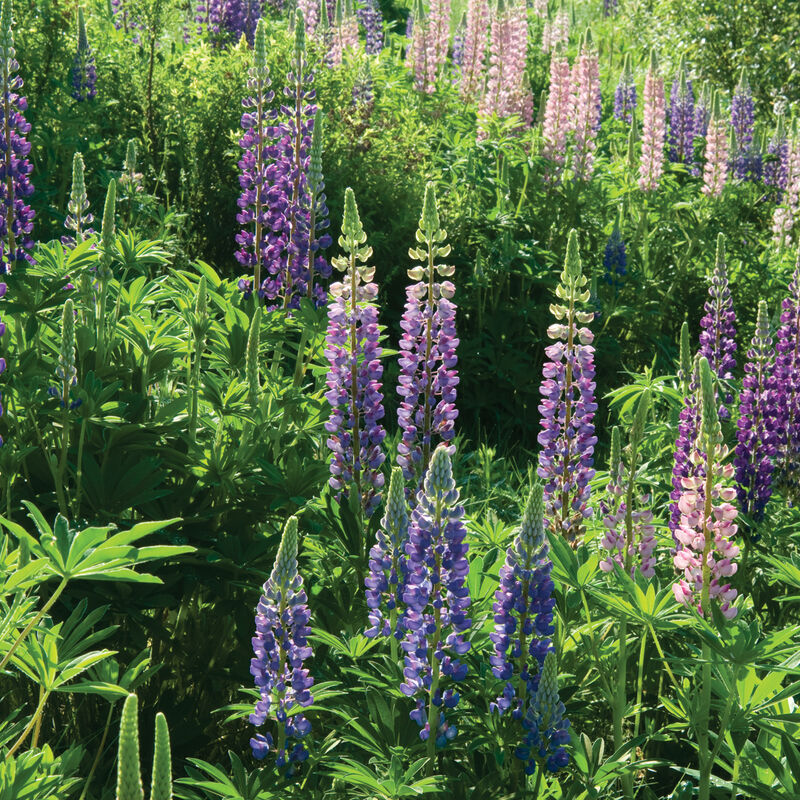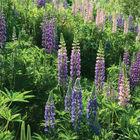Perennial Lupine Flower Seed
Perennial Lupine Flower Seed
Spectacular spires in shades of deep blue to purple.
These hardy perennials are long-lived and require very little maintenance. The flowers look great in a meadow or garden, as well as bouquets. Attracts and provides a food source for bees. Stems are stiff, erect 1-2' spikes densely covered with ½" pea-like flowers. Perennial in Zones 4-8.Specs:
SOWING: Transplant: Sow 4-8 weeks before planting out. Sow 2-3 seeds directly into cell packs (nothing smaller than a 32 tray) or individual containers. Cover seed, as darkness aids germination. Thin to one plant per cell or container when the first true leaves appear. Harden off and transplant outside in early spring. Roots of lupines are fragile and once restricted will produce inferior plants and flowers. When plants are ready to transplant, do not delay planting. Established plants do not transplant well, so it is best to plant where they will be left undisturbed.
Direct seed: Sow seeds in early spring, as soon as soil can be worked. Sow 1/4" deep. Thin when true leaves appear.
LIGHT PREFERENCE: Sun/Part Shade.
SOIL REQUIREMENTS: Average, slightly acidic soil.
PLANT SPACING: 18-24".
HARDINESS ZONES: Zones 4-8.
HARVEST: Fresh: Harvest when 80% of blooms on spike are open.
USES: Cut flower. Borders, masses, cottage gardens, or wildflower meadows.
SCIENTIFIC NAME: Lupinus spp.
Johnny's is committed to your success, every step of the way.
We want you, our customer, to be 100% satisfied with all of our seeds, tools, and supplies.
If anything you purchase from us proves unsatisfactory, we will either replace the item or refund the purchase price.







